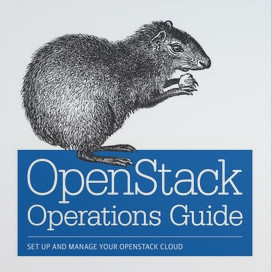Jon Proulx
OpenStack
Summit Presentation
This is a presentation on the state of CSAIL's private cloud infrastructure and what we were doing with it in 2013 that I presented at the Hong Kong Summit. I did update the presentation for OpenStack Days Istanbul in 2016, but while I thought that was recorded I can't seem to find it just now.
I really should update in any event as some interesting new use cases that are more "production" and less "research" are on our cloud now. For one example the World Wide Web Consortium has nearly completed a physical to virtual move from hardware in our data centers on to our private cloud. The Appinventor Project also makes use of our cloud as part of a (fairly wild) multicloud strategy which would make a great presentation in itself, though that is a tale for someone else.
User Committee
From July 2014 to August 2017 I sat on the OpenStack User Committee (UC). Uniquely (so far as I know) in OpenStack governance the committee under the Board of Directors co-equal with the Technical Committee (TC) and coordinates working groups on non-development topics such as operational best practices and use case development. The UC also works to represent the interest of the end user community to the Board and TC both directly and through a semi-annual user survey.
Perhaps the most important lesson I took away from this interview is that while it may be inconvenient to travel with a razor, you can always get one when you land.
Operations Manual
In my day to day work at CSAIL as in many technical environments keeping documentation up to date is challenging at best. We typically set new hires to work going through our documentation and asking question (and subsequently fixing) when it is insufficient or incorrect, so when I started on OpenStack I took on that role myself and became involved in the documentation project. Through this work of using and correcting the documentation for our real world operational challenges I was invited to participate in five day "book sprint" to write a complete operational manual for OpenStack.
I enjoy physical printed books for literature, but find them an odd choice for rapidly evolving technical material. None the less I am a co-author of the OpenStack Operations Guide published by O'Reilly. In my defense this also exists as a living electronic document that can be rapidly adapted as the software it documents changes.
The four opens
The "Four Opens", perhaps even more than their actual cloud software, is a key contribution of the OpenStack Foundation
- Open Source
- Open Community
- Open Development
- Open Design
OpenStack isn't the only open-source project or even the first to operate by these values, Wikimedia and to a slightly lesser (more developer centric) extent Debian come to mind as prior example. What OpenStack adds is making this central to their messaging and practice as well as really pushing to expand and engage end users who are not necessarily core code or content contributors.
As in all human endeavors this is rarely perfect, but by working to bring in those otherwise outside ideas and use cases OpenStack has a much more vibrant and flexible product in the end. Obviously this radical openness doesn't always translate to other management situations, but if we make open process and transparency the default and "trust me" the exception we can better build that trust base for when we cannot be open.